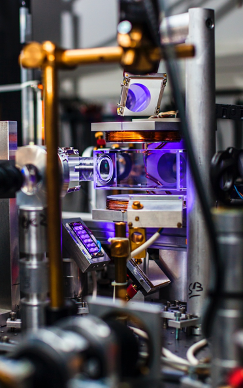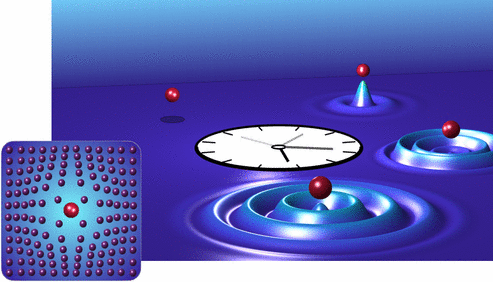Watching the birth of a quasiparticle
New paper in Nature Physics: A collaboration in the “Center for Complex Quantum Systems” at Aarhus University has successfully observed the formation of a quasiparticle.


Many different particles exist in nature, from elementary particles such as electrons and quarks, to compound objects like atoms or molecules that make up the building blocks of matter. Less well known, but equally important are the so-called quasiparticles, which consist of many particles and even contain excitations in collections of trillions of atoms. While they appear and behave like a particle in many respects, they have some exotic properties. The seemingly bizarre idea of quasiparticles has become one of the most fruitful and widely applied concepts in physics and has helped scientists to understand the complex inner workings of matter. The existence of such quasiparticles has been confirmed in many experiments, which typically observe the traces that they leave in a material. Yet, observing the process of how they come into existence is difficult in conventional materials and remained an elusive goal.
This has now been accomplished by a collaboration of three research groups in the “Center for Complex Quantum Systems” at Aarhus University. In the experiments, led by Jan Arlt, the researchers created an exotic state of matter, known as a Bose-Einstein condensate, which forms at extremely low temperatures a million times colder than interstellar space. “By changing the quantum state of only a few atoms in this Bose-Einstein condensate, we can trigger the formation of a special kind of quasiparticle, a so-called Bose polaron”, explains Jan Arlt. In other, more common materials, the Bose polaron is known to form when an electron moves through a crystal of atoms. It is therefore one of the most prominent and fundamental quasiparticles in nature playing a key role in many important phenomena. For instance, it determines the conductivity of many materials and is conjectured to be at the heart of striking effects such as superconductivity and giant magnetoresistance, which have become indispensable to current technology.
An atom can evolve into a quasiparticle by generating excitation in a quantum gas. This process resembles the motion of an electron through a solid as it deforms the underlying crystal. Illustration: CCQ, AU.
While most materials only allow for indirect observations of such polarons, the Aarhus experiment now makes it possible to deliberately create these quasiparticles and observe their dynamics in real time. In a sense, this allows the researchers to simulate the process of quasiparticle formation with their ultracold quantum gas, which would not have been possible on any available computer to date. “Bose Einstein condensates can be used as quantum simulators to better understand the behaviour of more complex and less controllable materials. The Aarhus experiment nicely demonstrates this powerful application, and has already revealed significant insights and sharpened our understanding of quasiparticles tremendously.”, describes Georg Bruun, who is behind one the theory groups in the collaboration.
“The ability to probe dynamics of Bose polarons has been an important step and now opens up a lot of exciting perspectives”, says Thomas Pohl, who leads the other theory team and the Center for Complex Quantum Systems at Aarhus University. Building on this achievement, the Aarhus team now wants to go beyond the mere experimental observation and aims to manipulate quasiparticles by coupling laser light to individual atoms in a Bose-Einstein condensate. In this way, the scientists hope to learn about new ways in which the properties of a material may someday be controlled and engineered in a similar fashion.
The paper in Nature Physics, titled "Non-equilibrium quantum dynamics and formation of the Bose polaron" can be downloaded here.

